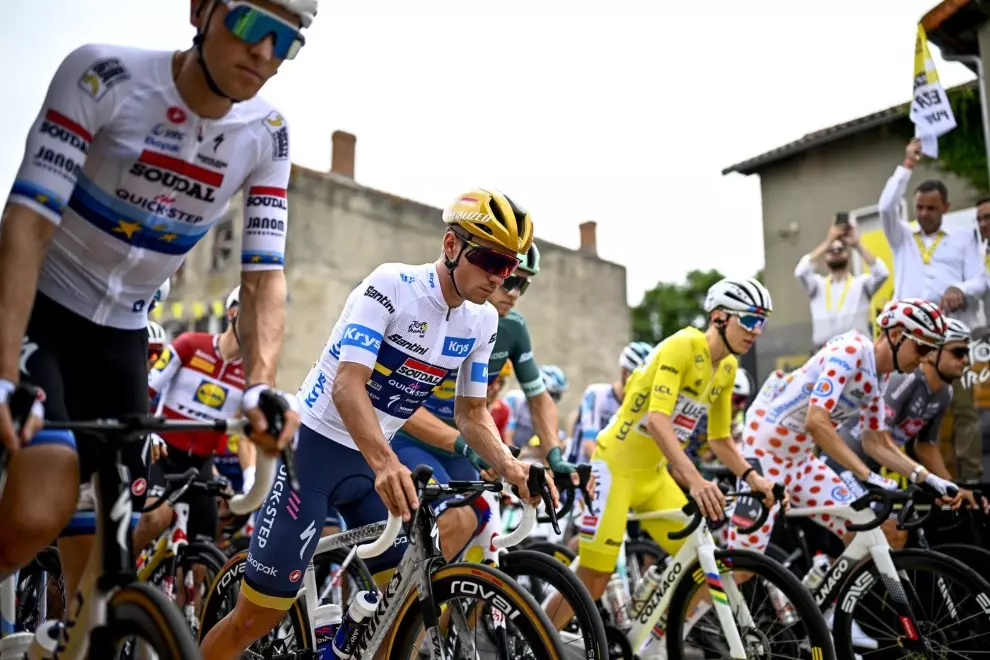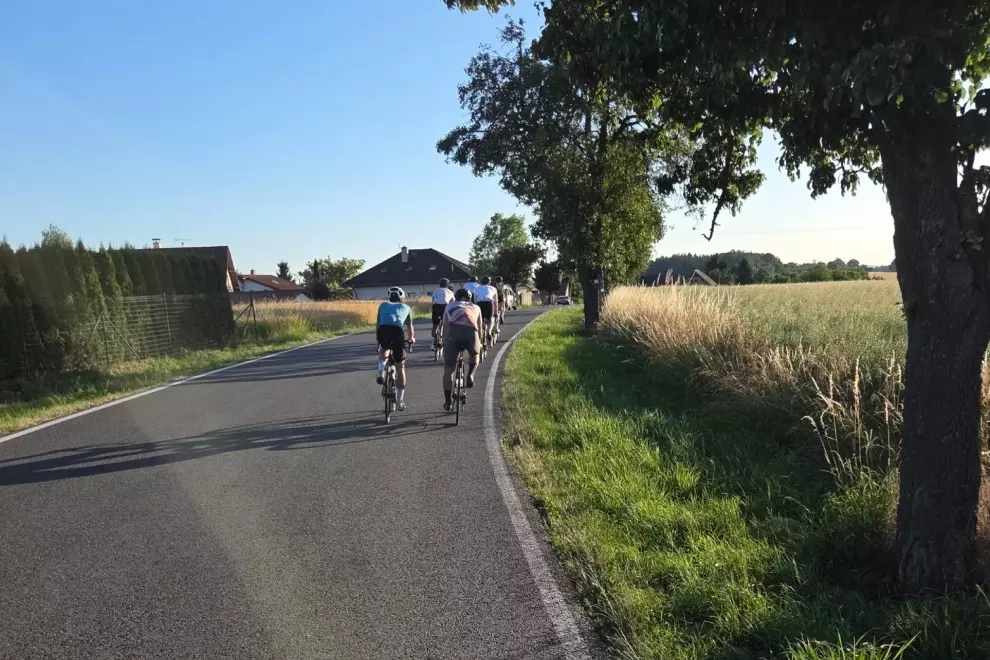Clothing
Let’s go from top to bottom.
Head, Ears & Neck; the keys to keeping it warm
For the head, the use of a traditional cycling cap, ‘La casquette’ is ideal. They look amazing and truly help to keep the head warm. In colder conditions, your ears will most likely suffer unless you protect them properly. In this case, we suggest simple ear plugs or something which covers them all together. For the neck, the easy solution is a buff scarf, which can easily be taken off and packed if you feel it’s too much.
Your very own cycling rain jacket
In rainy weather, it is obvious that you must have a rain jacket. But not any rain jacket will do. You should buy one specially made for cyclists. Normal rain jackets are designed to protect you when walking in a vertical position. The ones made for cyclists are designed to protect you in a bike-riding position which is more horizontal thus a different design is needed, including ventilation traps and a lower cut in the back to further protect your lower back.
For your torso, the name of the game is: layers – layers – layers
The simple secret of cycling in colder and wet conditions is this – various layers of clothing. A long-sleeve synthetic jersey is a must. It’s colder? Then a lightweight cycling jacket will do the trick. Colder and rainy? Put on the rain jacket and voila!

It’s preferable to own two different softshell jackets of various thickness: a medium thickness for chilly and dry days and a thicker and water-resistant one for chilly and rainy days. When you wear both together, you can continue riding in slightly sub-zero temperatures.
Cycling gloves to make sure that you can actually brake when needed!
If you are one of those people who are not using cycling gloves in the summertime, well, this is not going to work for autumn and early spring. You need to keep your fingers warm, so that you can properly handle your bike and brake fast enough.
The legs – keep it ‘Lycra and simple’
The first advice is to stick to Lycra / synthetic materials. They do not retain water all that much and remain comfortable even when wet. Do not buy waterproof pants unless you go for the top quality ones made of highly breathable materials such as Gore-Tex. Anything else will make you sweat and will quickly feel uncomfortable since your legs are generating a lot of heat when riding.

Two options worth looking into:
– If the weather is not so cold, we suggest normal cycling shorts with knee protectors. They are cheap to buy and easy to remove if you feel you’ve put on too much.
– If it feels colder, our bet goes with long cycling pants. You’d be surprised how warm they feel once you start pedalling.
Overshoes
Trust us, they’re worth it. You see a lot of pro cyclists use them and that’s because they really work. If you are not using the SPD pedal, it’s not a problem, simply buy a larger size and they will fit over your normal sport shoes. For example, I wear size 43 sneakers and an XL overshoe fits me just fine. The result – my shoes stay clean and dry and my feet remain warm.

Your bike
Because riding in wet conditions is known to be really awful for your bike’s components such as your derailleur, front chainring, etc., special attention should be given to your bike.
Bike greasing
If you plan on riding in late September, full cleaning and greasing of your bike’s mechanical components is a must. Including a switch to wet conditions lubricants. They protect your equipment a whole lot better than the normal dry conditions oils commonly used in summer. If you are the lazy type (like me) for when it comes to dirty work, a trip to your local bike shop will cost you a few monies. Then again, you can do it yourself as well.
Bike cleaning
As mentioned earlier, riding in autumn and early spring means a lot of dirt and sand sticking to your mechanical components. This will destroy them very quickly if you are not careful. Taking a few moments to check them out every now and then is the least you can do.
Stepping up your bike equipment
Mudguards
Putting the mudguards on is a no-brainer. If you want a few more months of riding, then don’t spare money on them. There are many types to choose from. Personally, I am using two different types. In the front, it’s one set attached to the downtube to protect it from getting covered with too much grub. Then I have a traditional set of mudguards covering both the front and rear wheel. The kind that goes low, not the fancy a*s savers.
Bike lights
Because the sun goes down rather quickly in autumn and early spring, they are worth the spent. Whether to go with battery-powered ones of charging lights is a personal choice.
A thermal bidon
This one will make your ride a lot more enjoyable. Just picture this. You are riding your bike with friends on a cold and damp autumnal Saturday. What’s going to cheer you up the most – a slurp of freezing water or a slightly warm sweet tea?
Roads to use
Change your road plans. Let’s face it, riding in autumn is not the same as riding on clear and sunny roads. So, adapt. Use that time of the year to explore. Use an MTB if you are a roadie during the summertime. Check out the forest roads around your area.
Of course, if you prefer to stick to normal roads, then try to use the roads with less traffic due to the fact that darkness comes early at this time of the year.







